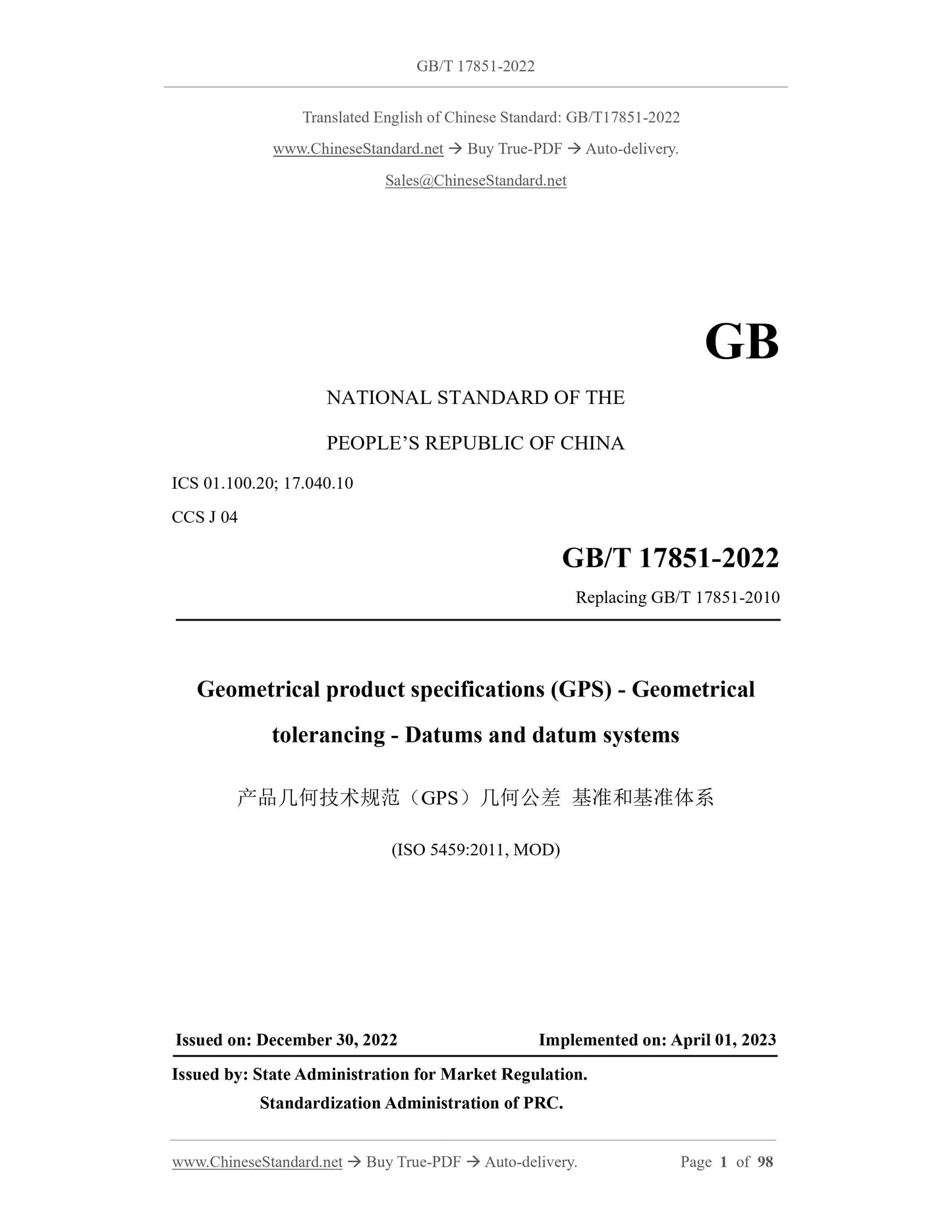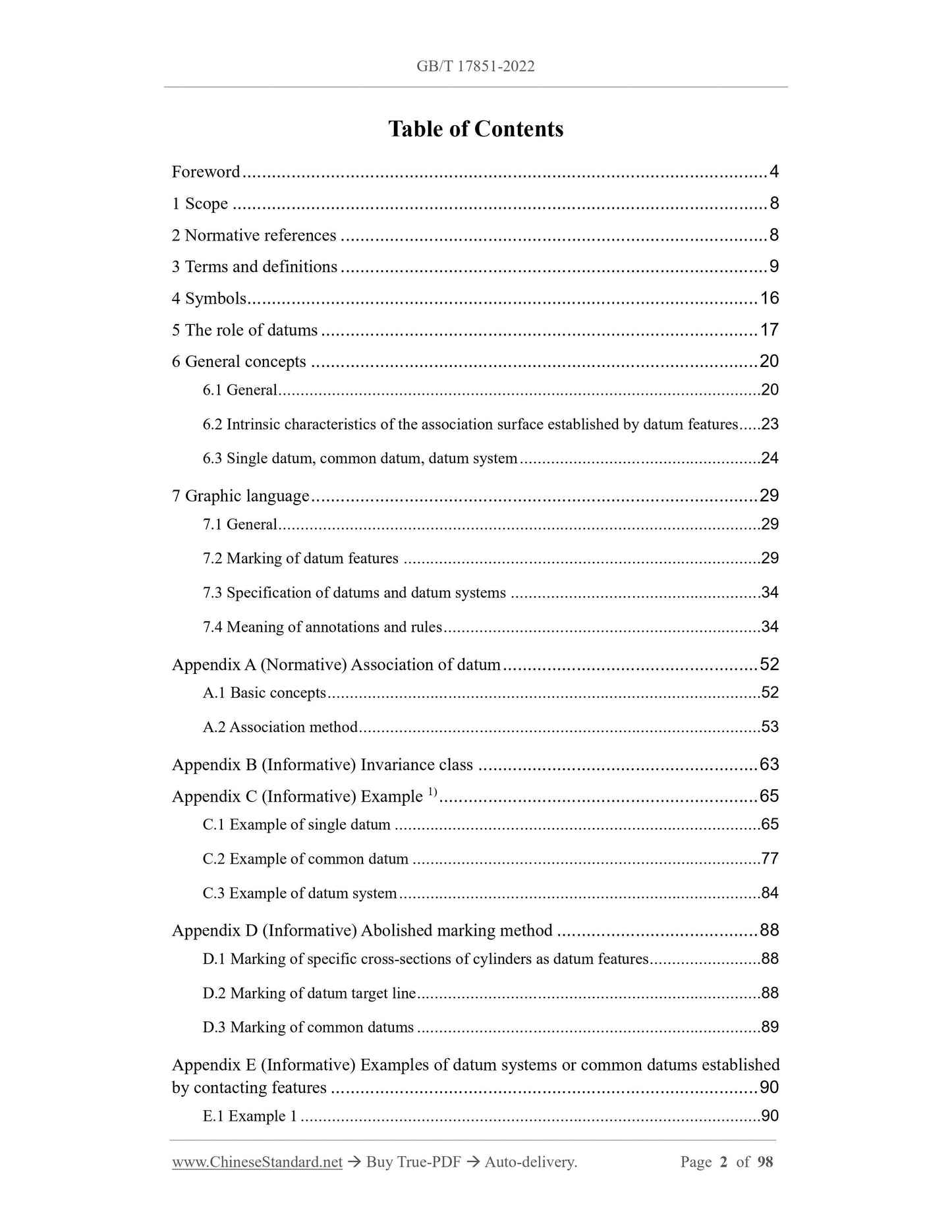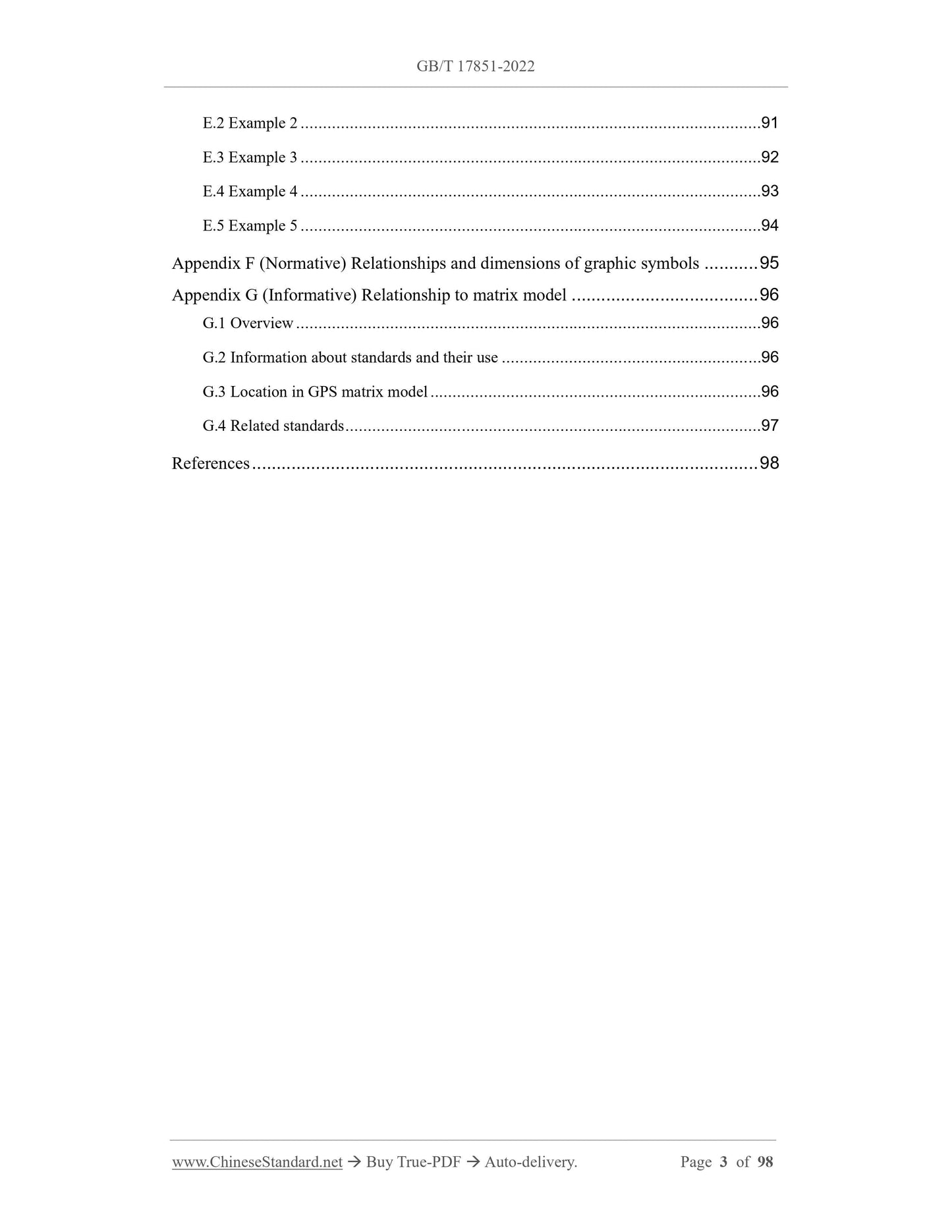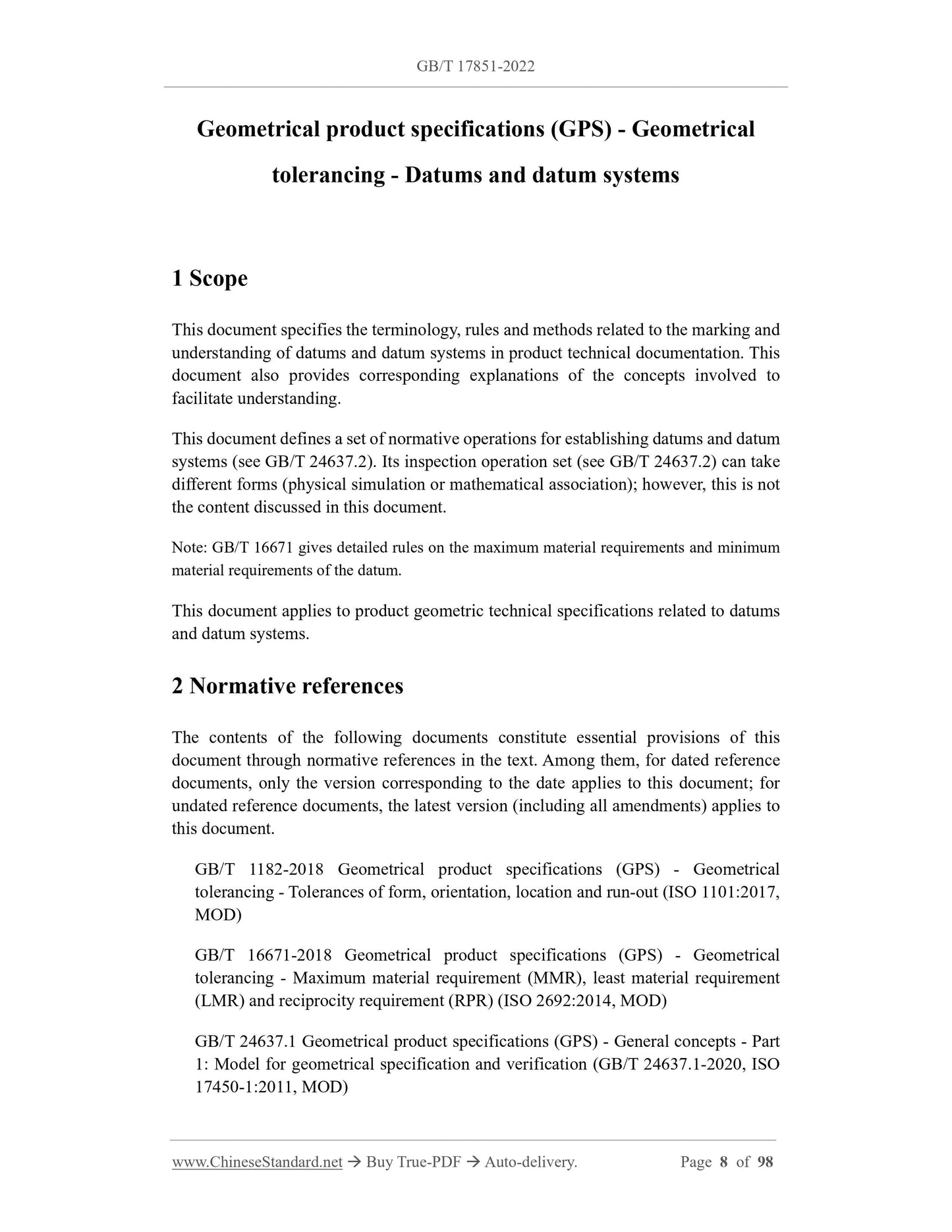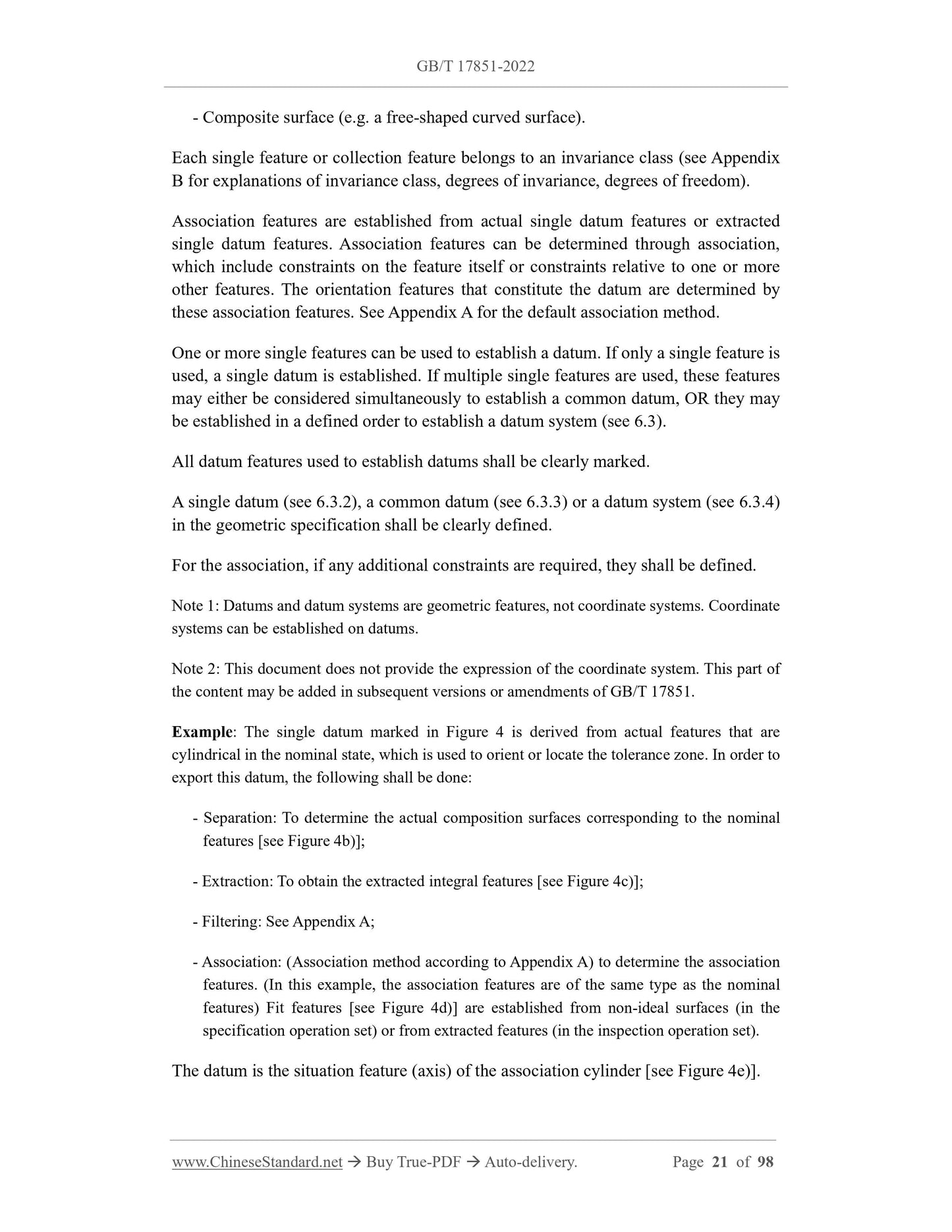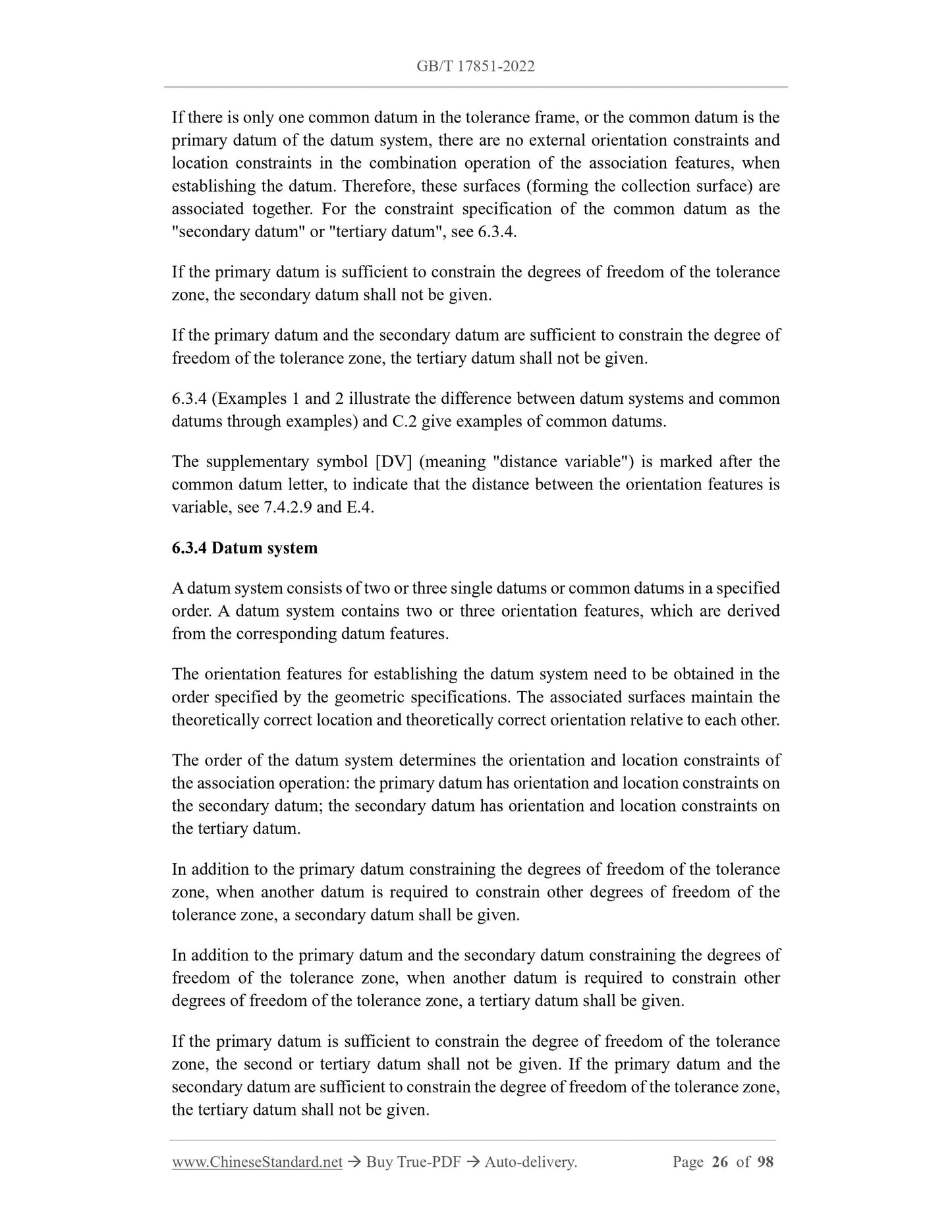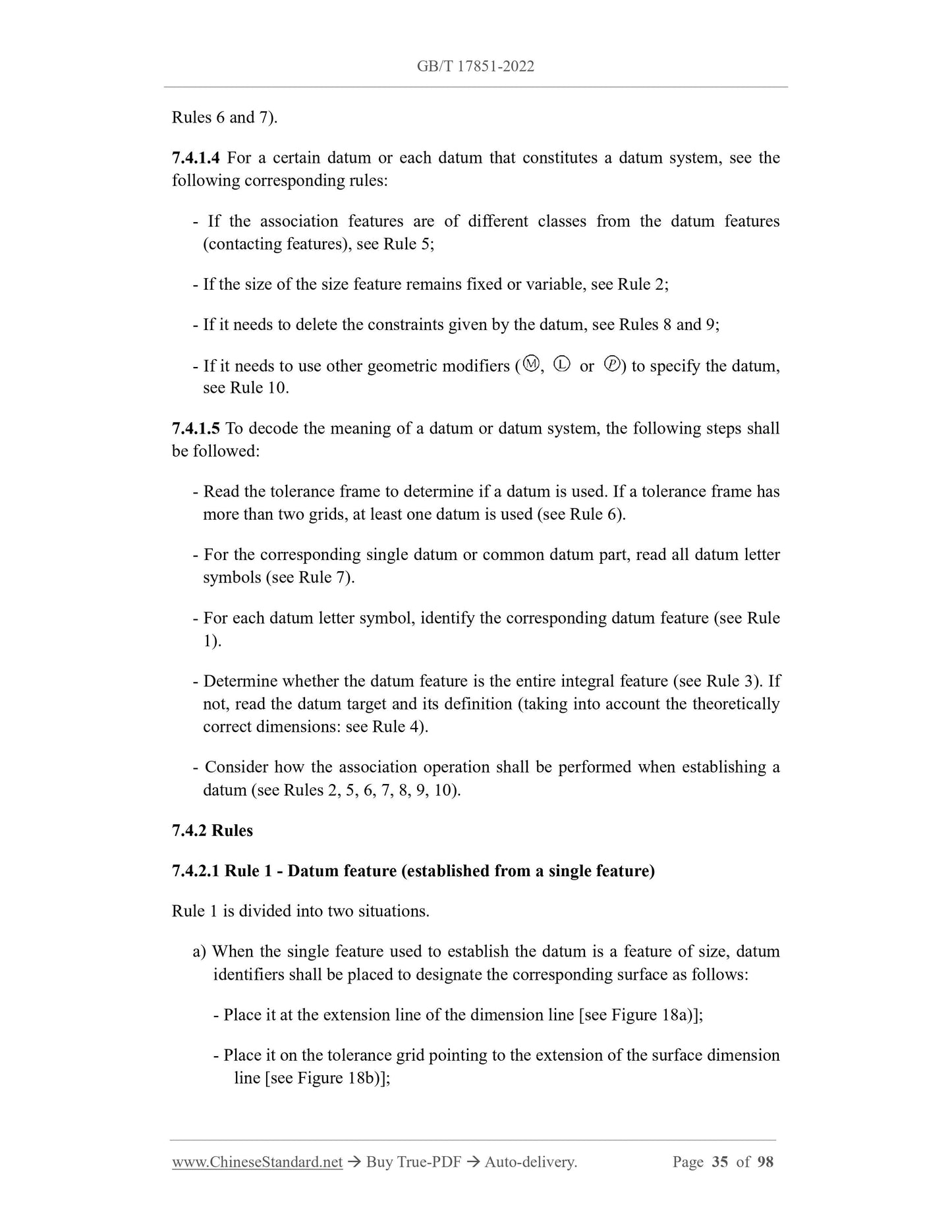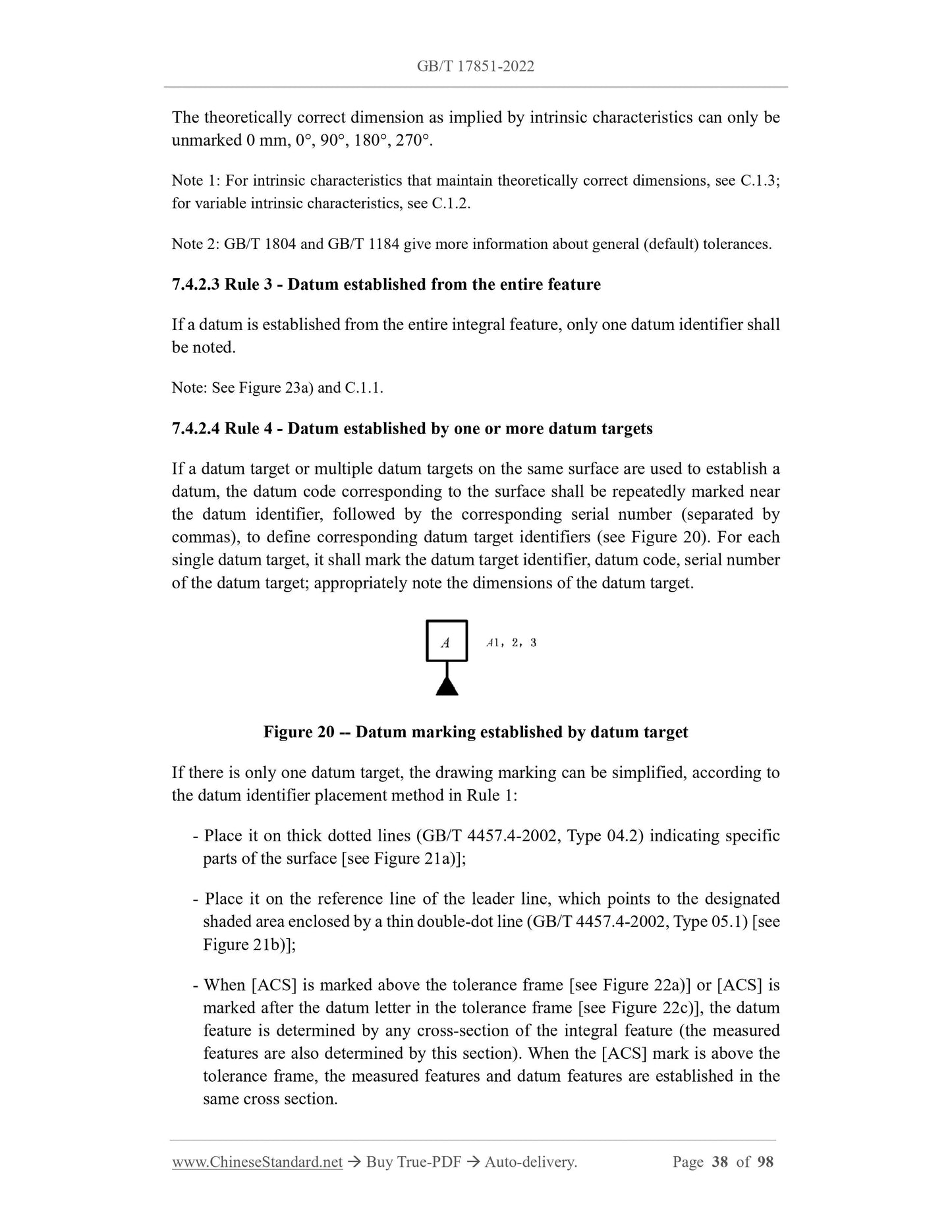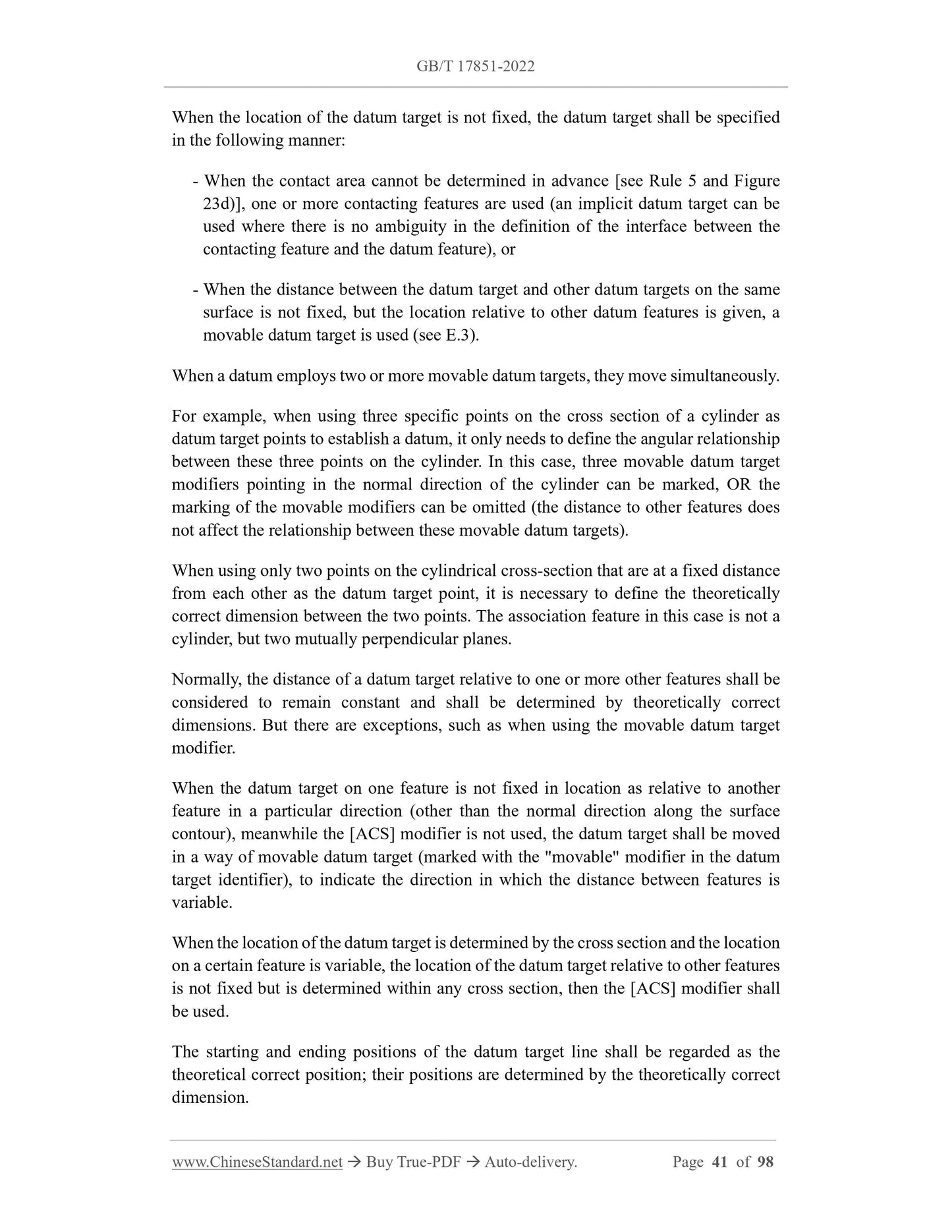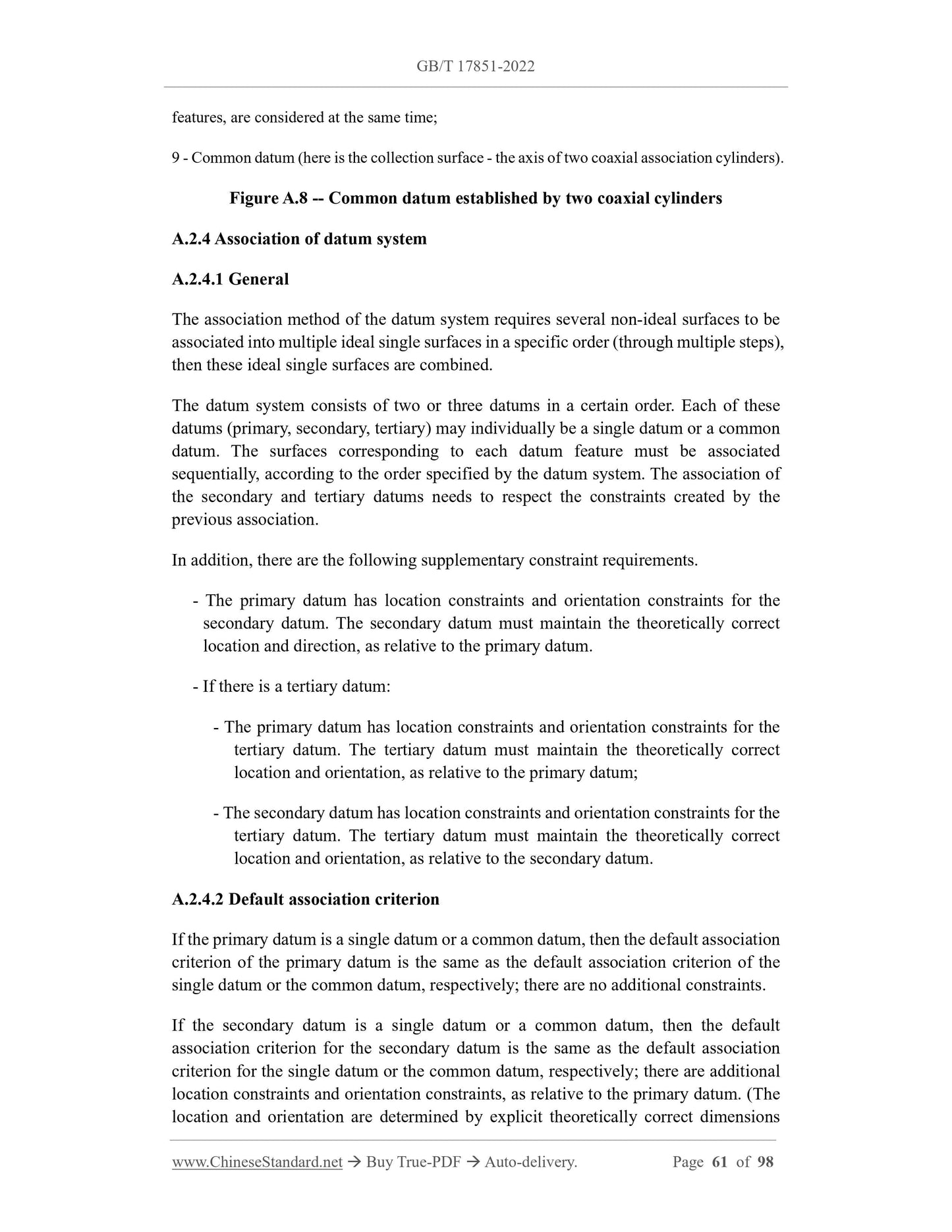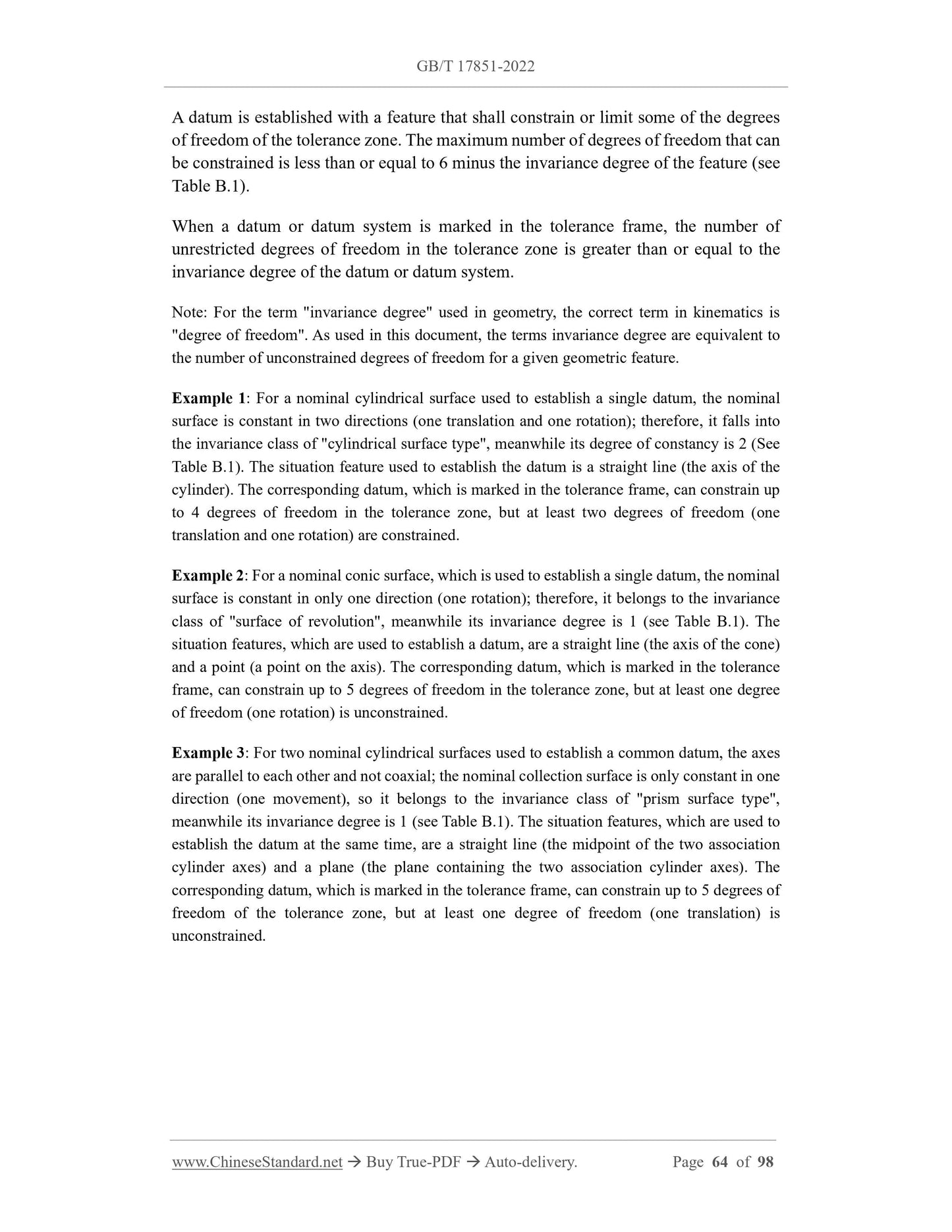1
/
of
12
www.ChineseStandard.us -- Field Test Asia Pte. Ltd.
GB/T 17851-2022 English PDF (GB/T17851-2022)
GB/T 17851-2022 English PDF (GB/T17851-2022)
Regular price
$1,145.00
Regular price
Sale price
$1,145.00
Unit price
/
per
Shipping calculated at checkout.
Couldn't load pickup availability
GB/T 17851-2022: Geometrical product specifications (GPS) - Geometrical tolerancing - Datums and datum systems
Delivery: 9 seconds. Download (and Email) true-PDF + Invoice.Get Quotation: Click GB/T 17851-2022 (Self-service in 1-minute)
Newer / historical versions: GB/T 17851-2022
Preview True-PDF
Scope
This document specifies the terminology, rules and methods related to the marking andunderstanding of datums and datum systems in product technical documentation. This
document also provides corresponding explanations of the concepts involved to
facilitate understanding.
This document defines a set of normative operations for establishing datums and datum
systems (see GB/T 24637.2). Its inspection operation set (see GB/T 24637.2) can take
different forms (physical simulation or mathematical association); however, this is not
the content discussed in this document.
Note: GB/T 16671 gives detailed rules on the maximum material requirements and minimum
material requirements of the datum.
This document applies to product geometric technical specifications related to datums
and datum systems.
Basic Data
| Standard ID | GB/T 17851-2022 (GB/T17851-2022) |
| Description (Translated English) | Geometrical product specifications (GPS) - Geometrical tolerancing - Datums and datum systems |
| Sector / Industry | National Standard (Recommended) |
| Classification of Chinese Standard | J04 |
| Classification of International Standard | 01.100.20; 17.040.10 |
| Word Count Estimation | 78,784 |
| Date of Issue | 2022-12-30 |
| Date of Implementation | 2023-04-01 |
| Older Standard (superseded by this standard) | GB/T 17851-2010 |
| Issuing agency(ies) | State Administration for Market Regulation, China National Standardization Administration |
Share
